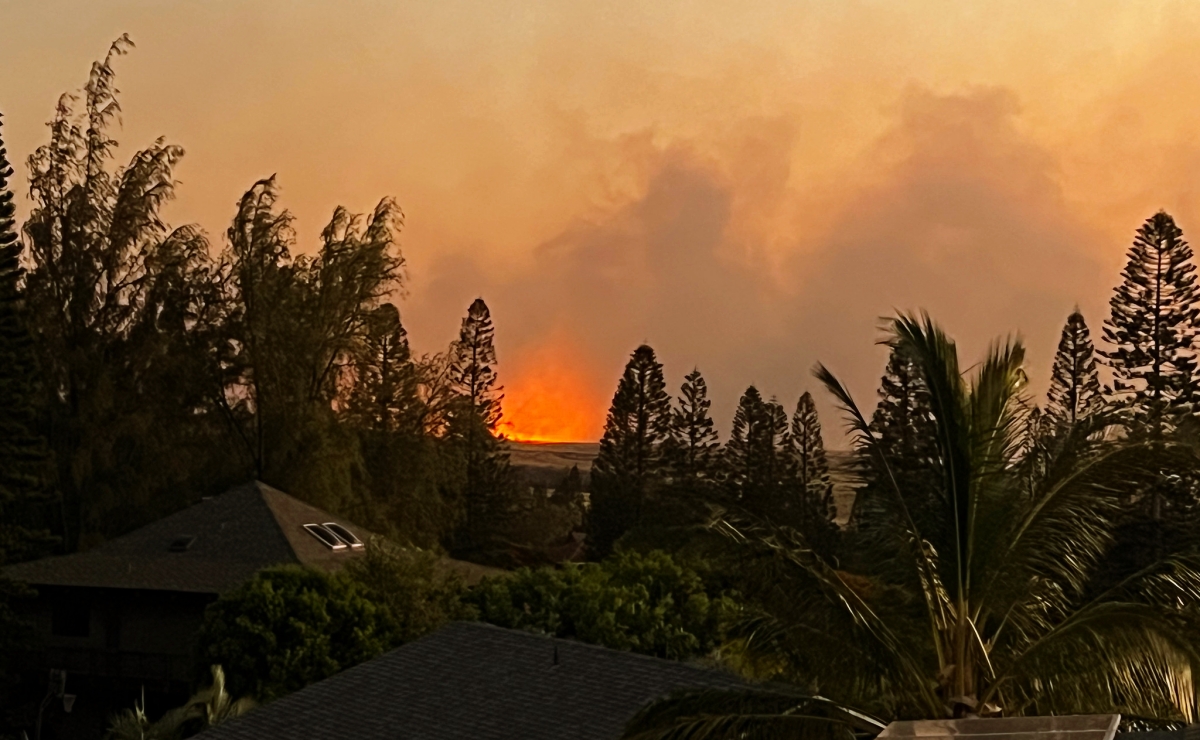Canada's Devastating Wildfires: Record Evacuations And Transborder Smoke

Table of Contents
Unprecedented Scale and Intensity of Canada's Wildfires 2023
The severity of Canada's 2023 wildfires is unprecedented, surpassing previous years in both the number of fires and the area burned. Several factors contribute to this crisis, including climate change, which has led to prolonged droughts and increased temperatures creating tinderbox conditions. The extended dry spells have left forests exceptionally vulnerable, fueling rapid fire spread.
Data illustrates the sheer scale of the disaster. Thousands of active fires raged across the country, consuming millions of hectares of land. This is significantly higher than the average for previous years, highlighting the escalating impact of climate change on wildfire activity.
- Regions Most Affected: British Columbia, Alberta, Northwest Territories, and Quebec have been particularly hard hit, experiencing widespread destruction and significant loss of life.
- Fueling the Fires: Vast areas of boreal forests, composed primarily of coniferous trees and highly flammable underbrush, have provided ample fuel for the intense and rapidly spreading fires. Dry peatlands also contribute to prolonged burning.
- Impact on Wildlife and Ecosystems: The wildfires have had a devastating impact on wildlife populations, destroying habitats and causing significant loss of biodiversity. The long-term ecological consequences are still being assessed, but the damage is extensive and will likely take decades to repair.
Record-Breaking Evacuations and Displacement
The unprecedented scale of the wildfires has resulted in record-breaking evacuations. Tens of thousands of Canadians have been forced to flee their homes, seeking refuge in temporary shelters and with family and friends. Many face the daunting prospect of returning to homes completely destroyed.
Evacuees face numerous challenges, including finding adequate housing, securing essential resources like food and clothing, and coping with the emotional toll of displacement and loss. The long-term effects on communities, families, and individuals will be profound.
- Severely Impacted Communities: Numerous small towns and indigenous communities have been particularly devastated, facing complete or near-complete destruction. The rebuilding process will be lengthy and costly.
- Challenges in Providing Resources: The sheer number of evacuees has strained the resources of government agencies and charitable organizations. Meeting the immediate needs for housing, food, and mental health support has been a significant challenge.
- Long-Term Effects of Displacement: The psychological impact on individuals and communities is substantial. Many evacuees face the trauma of losing their homes, belongings, and livelihoods, with long-term impacts on their mental and physical health.
Transborder Smoke and its Health Impacts
The smoke from Canada's wildfires has not remained confined to the country's borders. Thick plumes have travelled south, significantly impacting air quality across vast swathes of the United States, particularly in the eastern and midwestern states. This transborder smoke poses serious health risks.
Exposure to wildfire smoke can cause or exacerbate a range of respiratory problems, including asthma, bronchitis, and pneumonia. Cardiovascular issues are also a concern.
- US Regions Impacted: Cities like New York, Chicago, and Washington D.C. experienced significantly degraded air quality, resulting in air quality alerts and health advisories.
- Health Recommendations: Individuals are advised to limit outdoor activities during periods of high smoke concentration, stay indoors with air purifiers, and seek medical attention if they experience respiratory symptoms.
- Economic Impacts: Reduced visibility from the smoke has disrupted air travel, causing flight cancellations and delays. Increased healthcare costs due to respiratory illnesses also impose a significant economic burden.
Government Response and International Aid
The Canadian government has responded to the crisis by deploying firefighters, allocating significant resources to combat the fires, and providing support for evacuees. However, the magnitude of the disaster has challenged even the most well-prepared emergency response systems.
International aid has also been crucial. Various countries have offered assistance, providing firefighting crews, equipment, and financial support.
- Government Initiatives: The Canadian government has announced various funding programs to assist affected communities and individuals, including grants for rebuilding homes and businesses.
- International Assistance: The United States, Mexico, and other countries have provided substantial aid, reflecting the international nature of this environmental emergency.
- Areas for Improvement: The scale of the crisis has highlighted the need for improved wildfire prevention measures, enhanced early warning systems, and better coordination of emergency response efforts.
Conclusion
Canada's 2023 wildfires represent a devastating environmental catastrophe, resulting in record-breaking evacuations and the widespread impact of transborder smoke. The scale of the devastation underscores the urgent need to address climate change and improve wildfire preparedness. We must invest in better forest management practices, strengthen early warning systems, and commit to reducing greenhouse gas emissions to mitigate the risk of future devastating wildfires. Stay informed about the evolving situation of Canada's wildfires and consider supporting organizations working to provide aid to those affected. Learn more about how you can help combat climate change to reduce the risk of future devastating wildfires.

Featured Posts
-
 The Case For A Female Banksy Examining The Clues
May 31, 2025
The Case For A Female Banksy Examining The Clues
May 31, 2025 -
 Cau Thu Cau Long Viet Nam Xinh Dep Dat Muc Tieu Top 20 The Gioi Tai Giai Dong Nam A
May 31, 2025
Cau Thu Cau Long Viet Nam Xinh Dep Dat Muc Tieu Top 20 The Gioi Tai Giai Dong Nam A
May 31, 2025 -
 Tres Ingredientes Un Plato Aragones Del Siglo Xix
May 31, 2025
Tres Ingredientes Un Plato Aragones Del Siglo Xix
May 31, 2025 -
 Cleveland Guardians Vs Minnesota Twins April 29th Game Time And Weather
May 31, 2025
Cleveland Guardians Vs Minnesota Twins April 29th Game Time And Weather
May 31, 2025 -
 Croque Monsieur Casero Receta Facil Paso A Paso
May 31, 2025
Croque Monsieur Casero Receta Facil Paso A Paso
May 31, 2025
